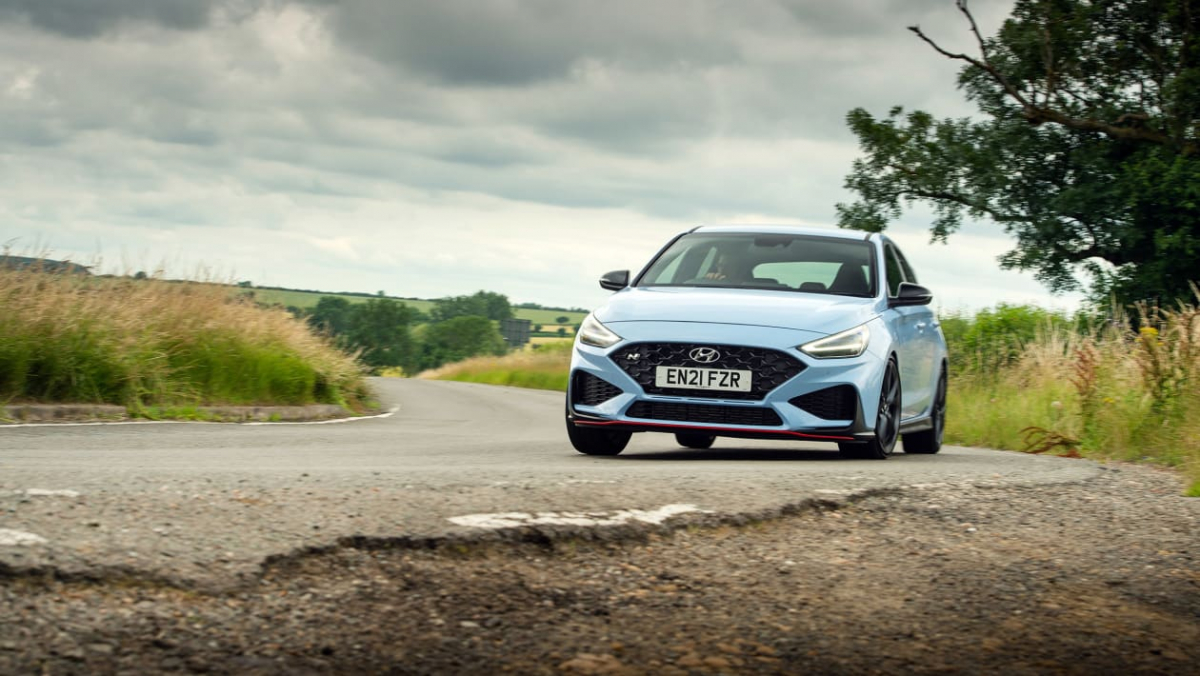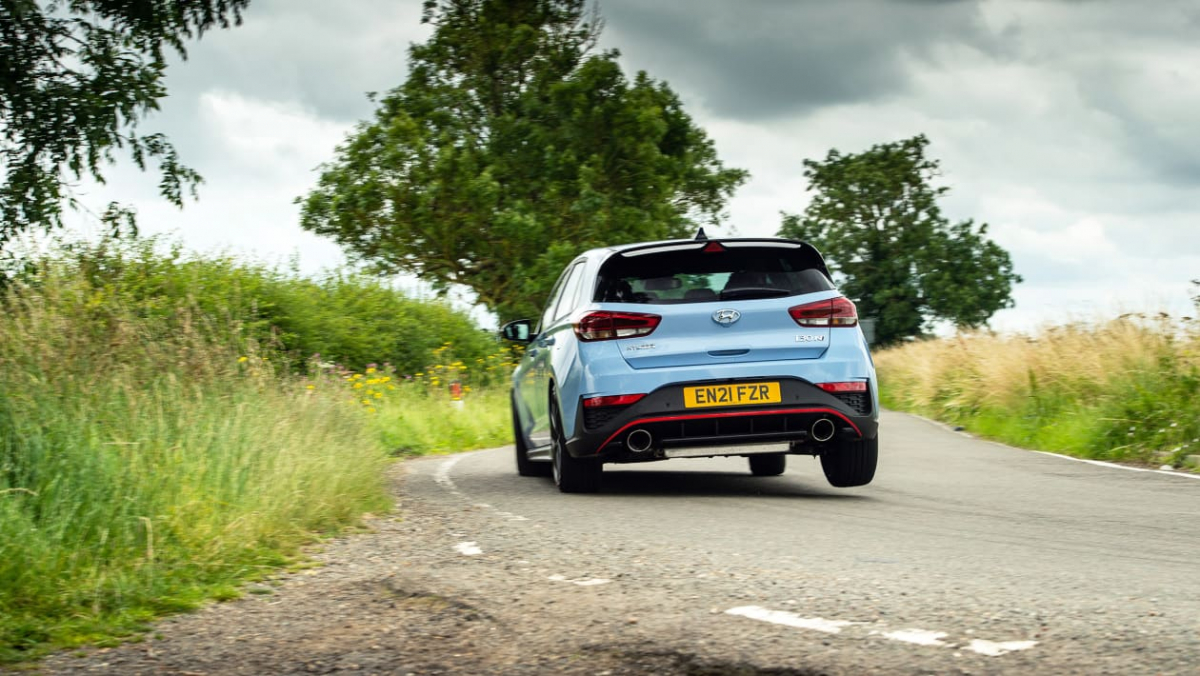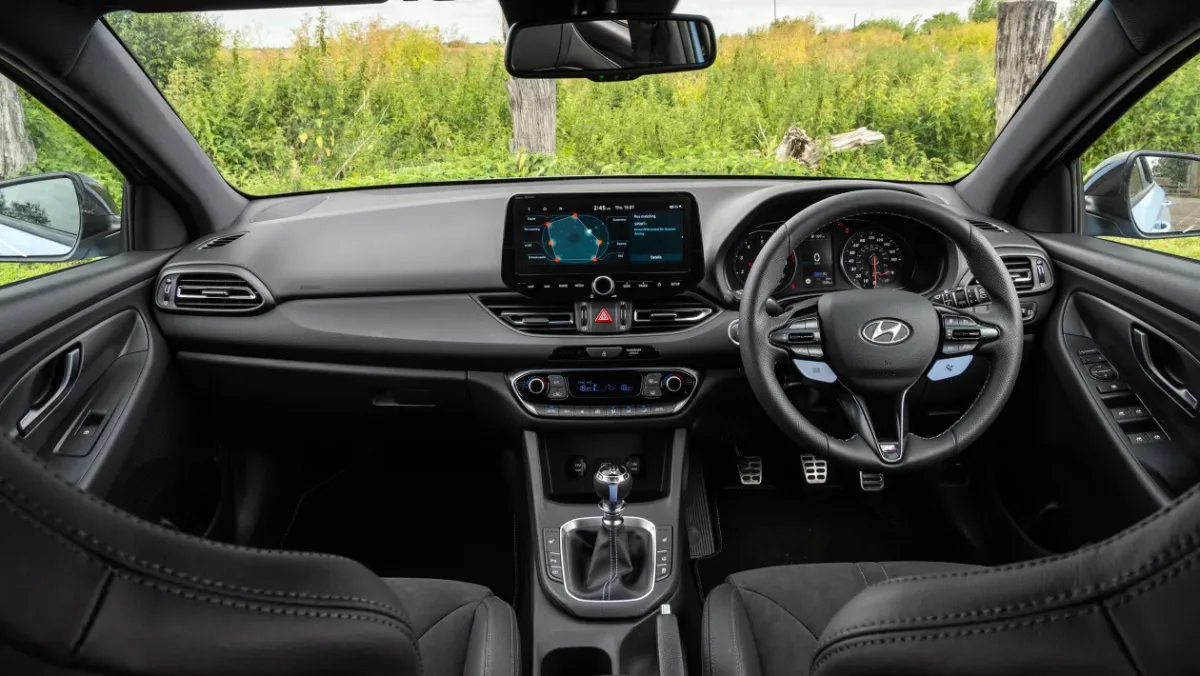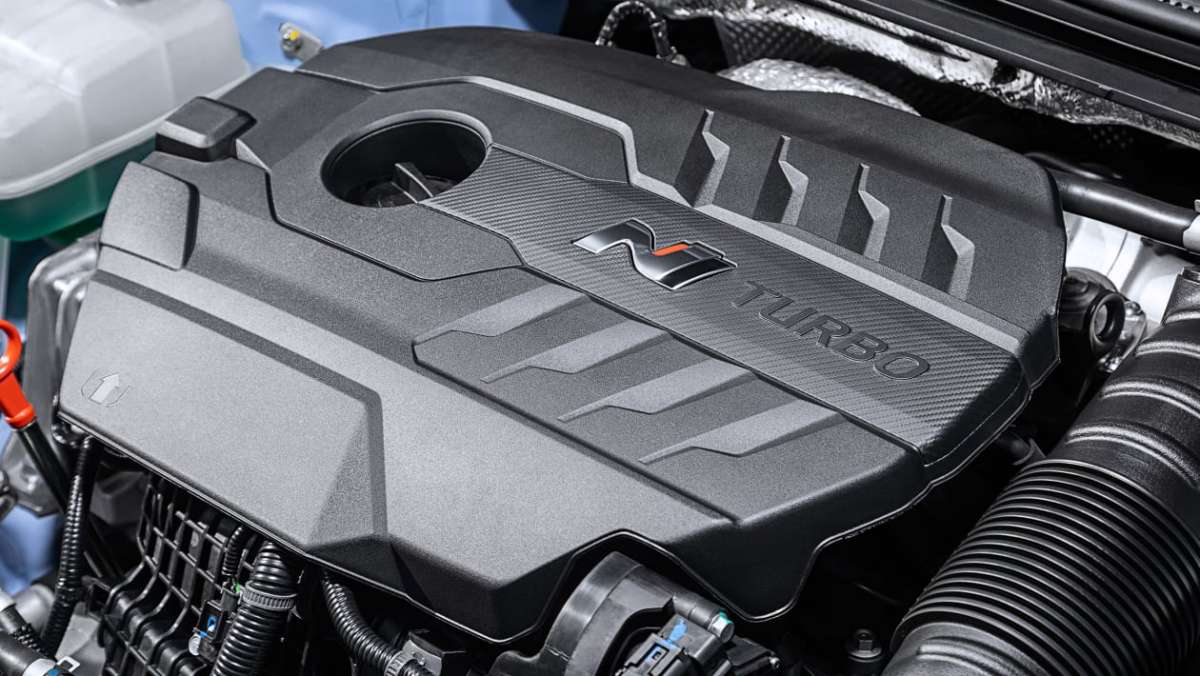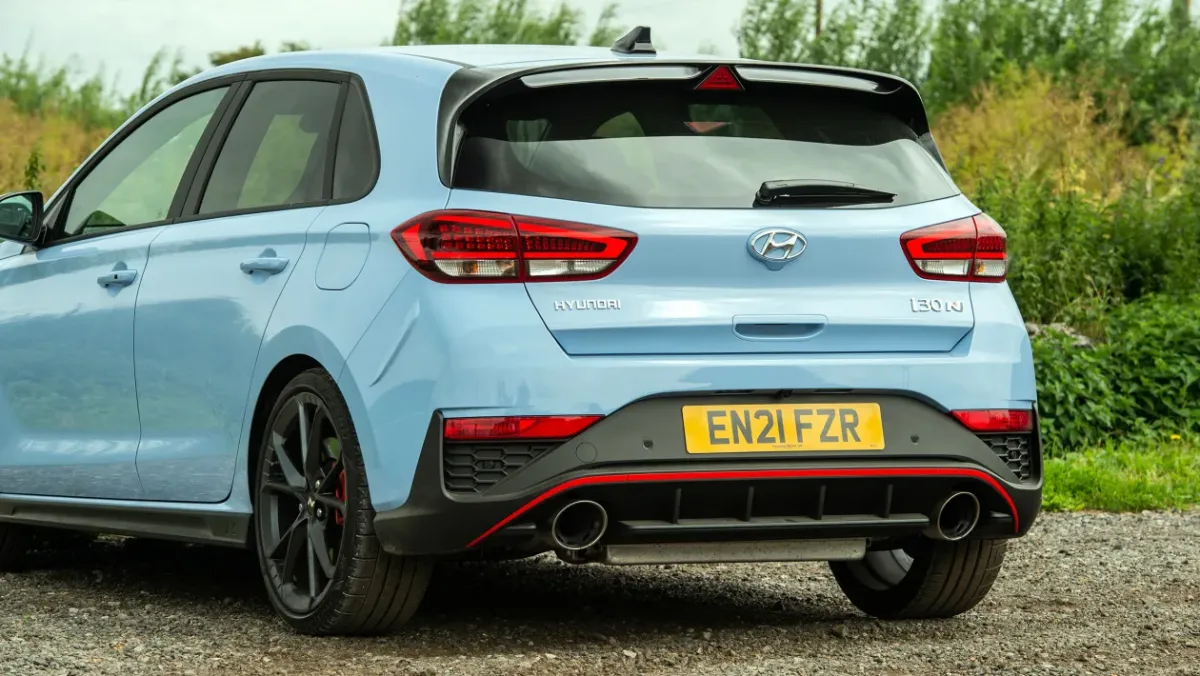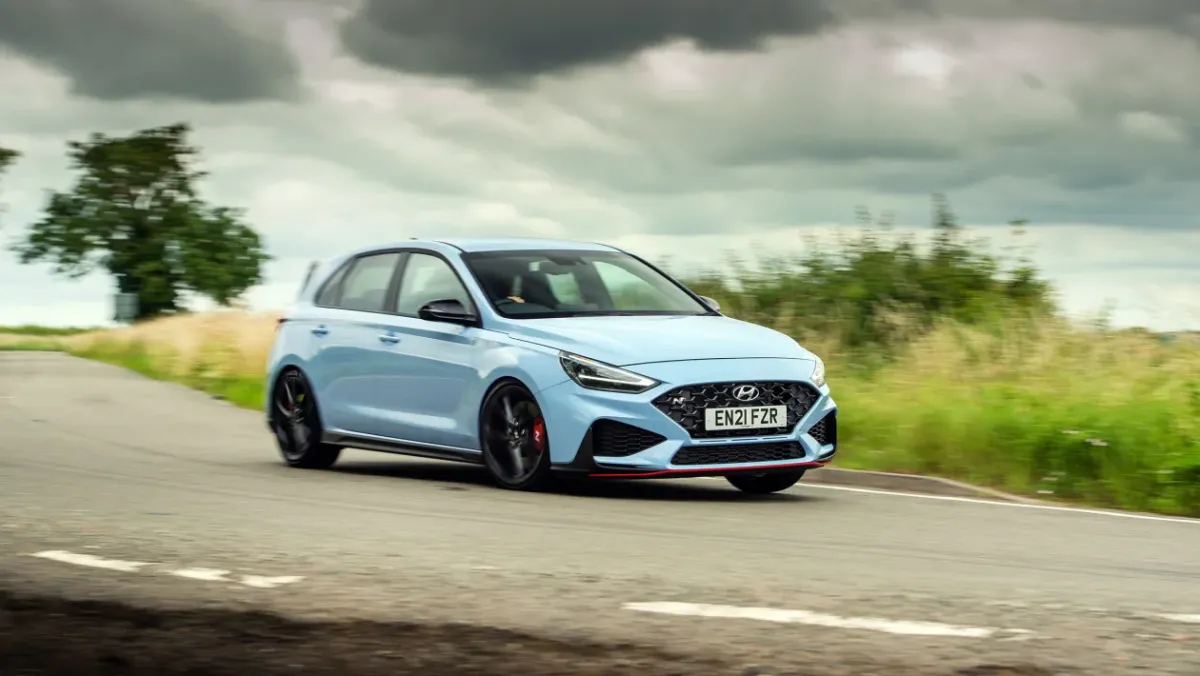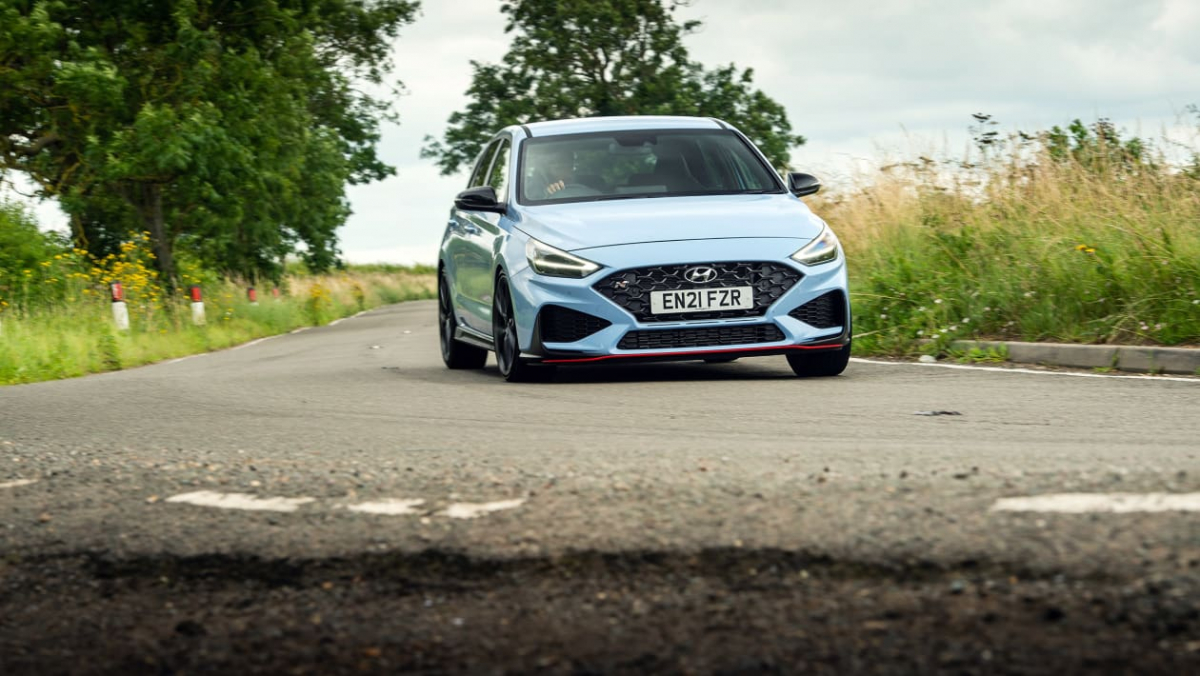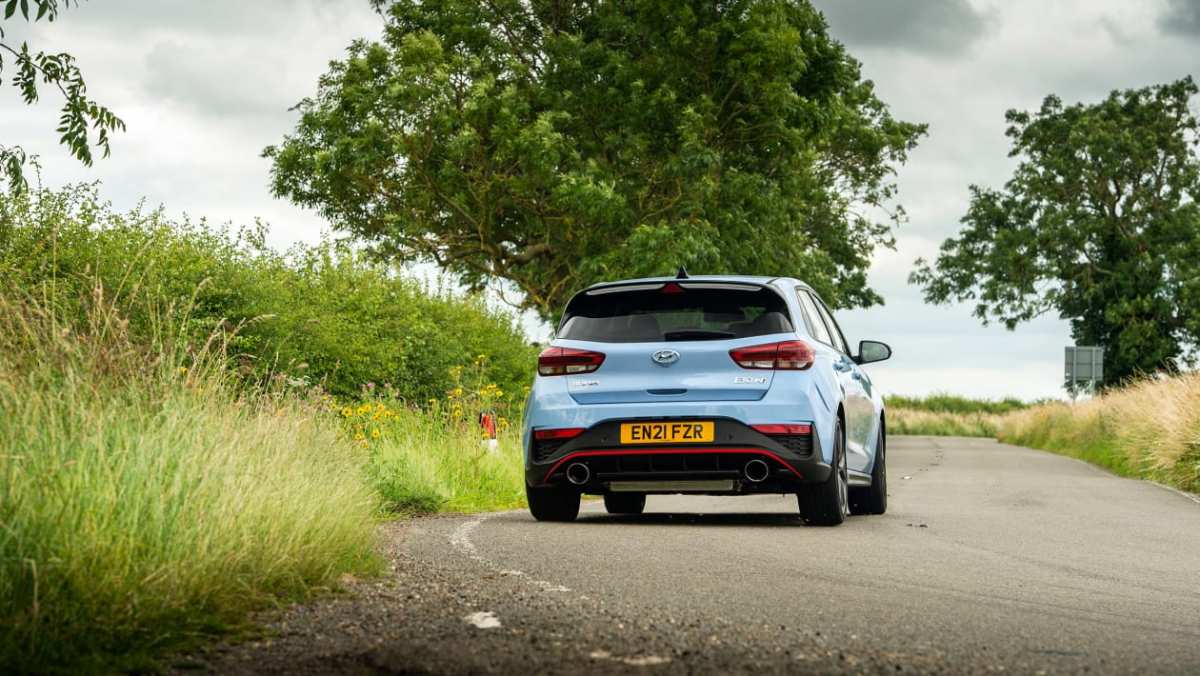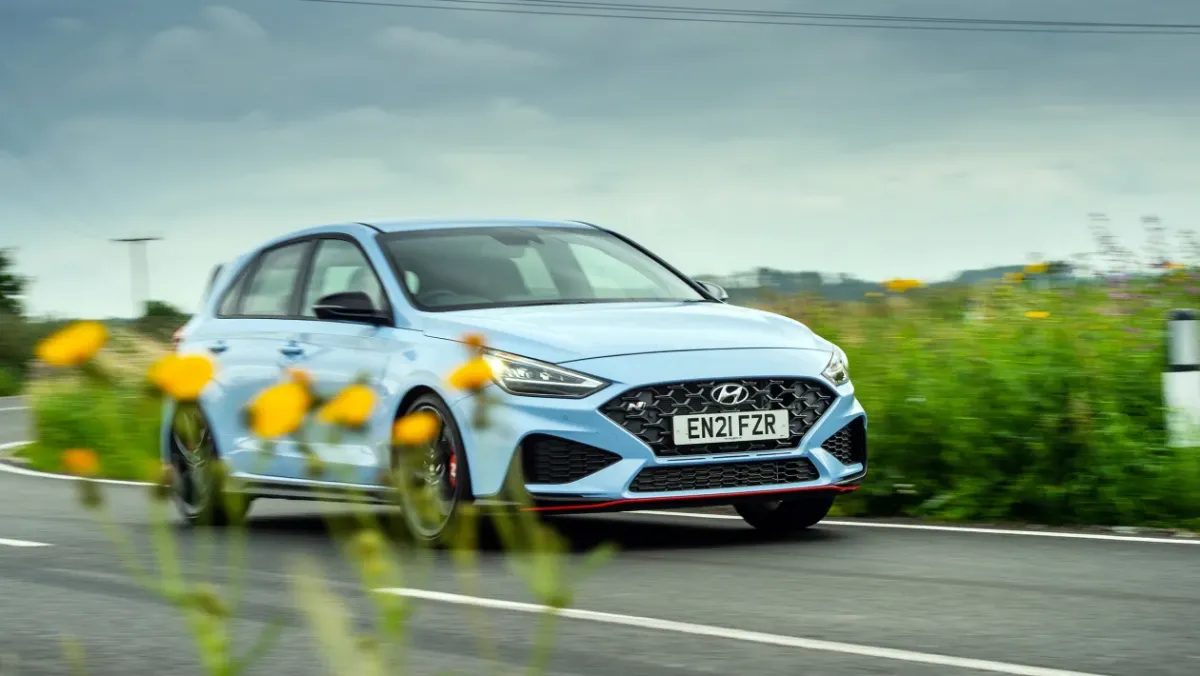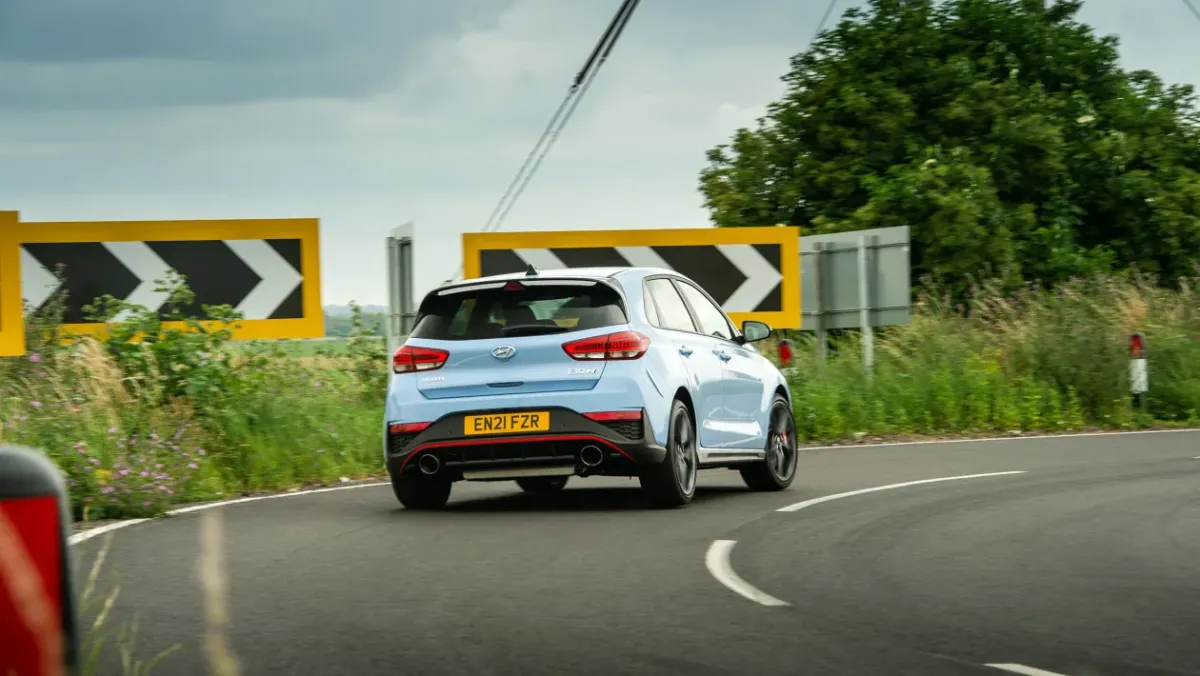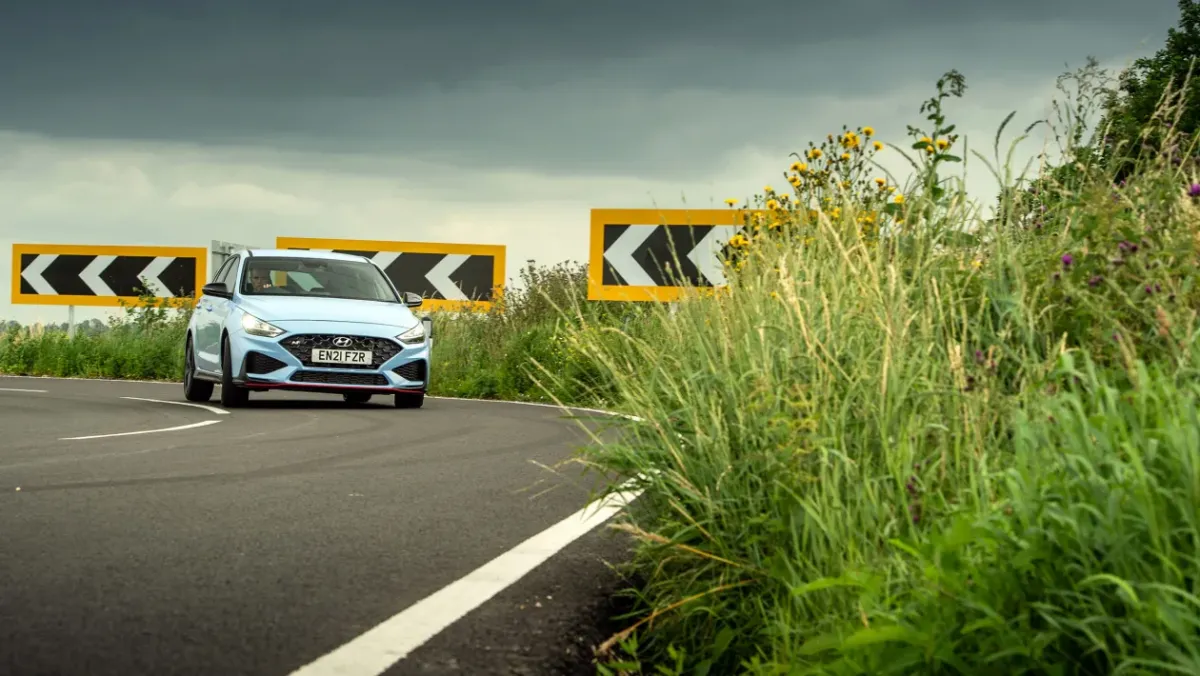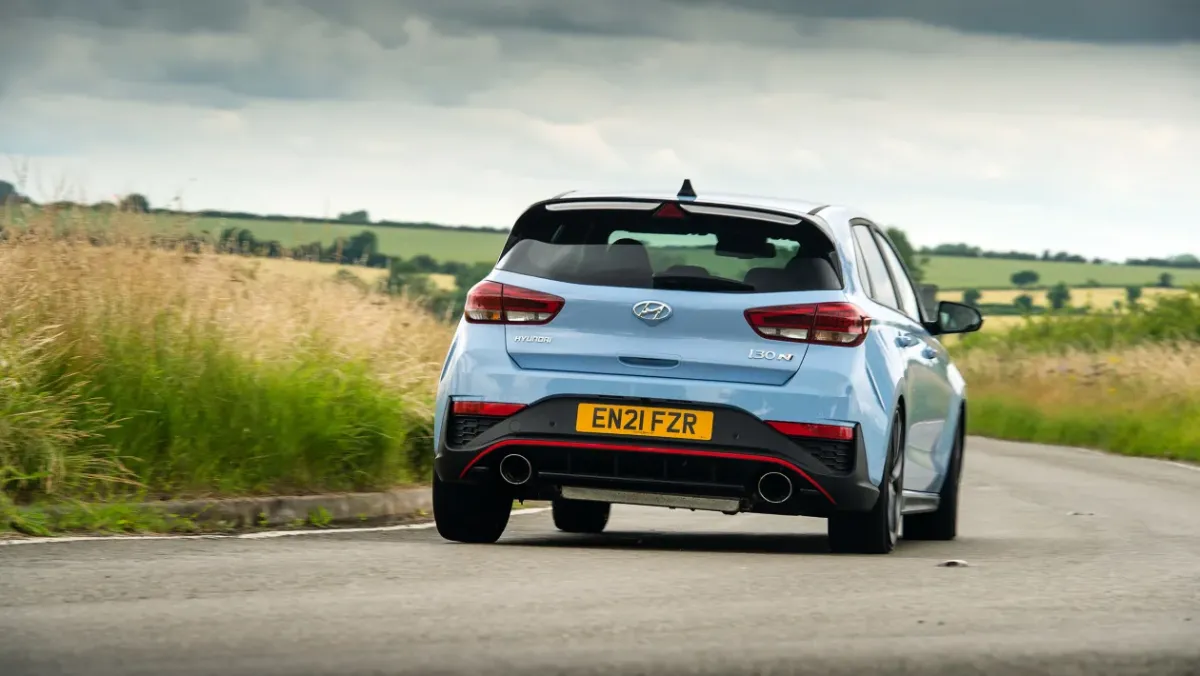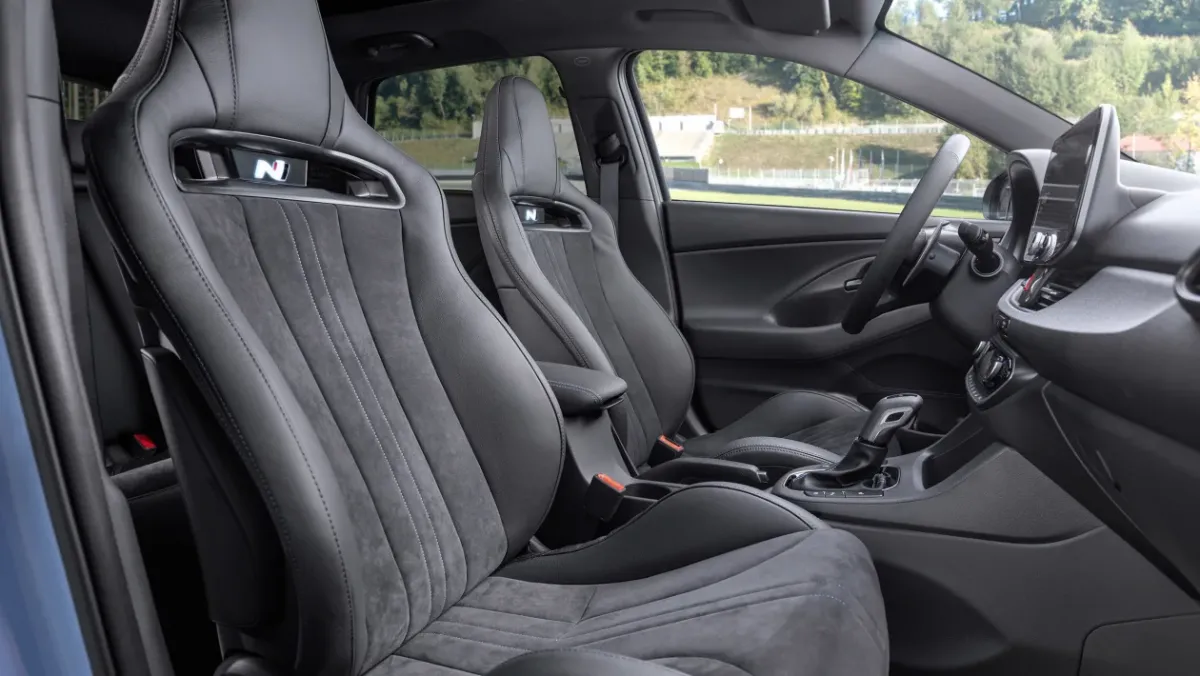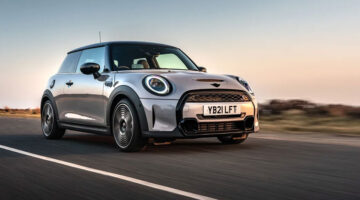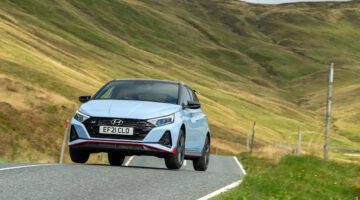Updated i30 N’s small tweaks yield big results, making this the hot hatch of the moment
| Enthusiastic and hard-hitting yet balanced and engaging, the i30 N does it all | |
| Engine still lacks true sparkle, still heavier than ideal |
It’s hard to believe, but the Hyundai i30 N has been around for nearly five years, in that time completely transforming Hyundai’s image amongst those interested in driving, and has since become a byword for the modern hot hatch.
Hyundai’s hot hatch presence started with the i30 N, and it remains its best N model, and after a recent update that focused on small but meaningful elements, it’s now the best hot hatchback money can buy. The previous generation’s entry-level model is now gone, and prices for all others have gone up across the board, but the i30 N still feels worth every penny.
There’s more variety this time around, too. The i30 Fastback N has returned, and both cars are now available with an optional dual-clutch transmission that was specifically designed for the i30 N and its requirements, adding even more daily versatility to the package if two pedals is a must.
So right now, in 2022, this i30 N competes in an ecosystem with the best of the VW Group’s efforts, a strong Ford Focus ST and Renault Mégane RS, and even a hot-rod front-wheel-drive BMW, yet the Hyundai remains unbeatable. The i30 N sits at the top of a very talented field, and it’s a truly fantastic thing to drive.
Price and rivals
Hyundai condensed its N range to just the one version a couple of years ago, dropping the standard 247bhp model and leaving just the high-spec variant. As a result, the i30 N’s head-turning £25,995 starting price no longer applies, but even comparing like for like, the new i30 N’s £34,045 base price is a substantial £4000-plus jump. The new DCT adds a further £1950 to the price, making the five-door hatch £35,995, but given the effort and expense involved in its development, which we’ll go into later, it feels like a good deal. Fastbacks are an extra £750 again.
The good news is that unlike some German rivals, the i30 N is superbly equipped as standard, so there’s not a lot you’ll be adding to that price in terms of extras. Metallic paint aside, the only option available is the new lightweight sports seats at £600 – a very worthwhile upgrade.
Standard kit across both models includes N-specific body styling, a leather steering wheel and gearknob, and Apple CarPlay and Android Auto integrated into the new, larger navigation and infotainment screen. Both the standard sports seats and optional buckets are trimmed in Alcantara and leather, electrically adjustable and heated. From a hardware perspective, there’s also an electronically controlled limited-slip differential, new forged 19-inch alloy wheels with Pirelli P Zero tyres, bigger brakes, an active exhaust and adaptive dampers.
As for rivals, Volkswagen’s new Mk8 Golf GTI has in fact been knocked back from its previous highs, with the standard GTI’s driving experience ultimately underwhelming in terms of performance and feedback, while the GTI Clubsport hits harder but then finds the limits of its chassis even more quickly. Specify the right optional wheels and tyres, adaptive dampers and a few toys that are otherwise standard on the i30 N and you’ll be way over the £40k mark, making it seem especially expensive for what is inherently an inferior hot hatchback. And the less we talk about the VW’s digital interface, the better.
The Cupra Leon 300 TSI is a similar story to the Golf, with similar limitations and flaws, but in a slightly more enthusiastic and rambunctious package – a curious contrast to its decidedly mundane design. The Skoda Octavia actually does the best job of realising the current generation of VW Group hot hatchbacks, especially with its manual transmission, but the Hyundai remains by far the most entertaining and capable on any road surface.
The Ford Focus ST has its own flaws, namely a lumpen engine and iffy steering. The chassis has a sweet balance, and despite its hesitation to rev, is the quicker car, especially in higher gears. The Renault Mégane RS runs things closest to the i30 N in this midsize hot hatchback grouping, with a fantastically agile and reactive chassis and powertrain that’s undone slightly by the rear-wheel-steering system’s calibration.
Really there’s only one hot hatchback that will sit clear of the i30 N and that’s the Honda Civic Type R. It’s broadly brilliant at pretty much everything, aside from availability, as it went out of production in 2021. A brand new model is on the cusp of being revealed, but we find ourselves at a point where the demise of Honda’s UK factory in Swindon has also led to a delay in the new model’s availability in Europe. A few in-stock models of the previous generation remain in the dealership network, but if you can find one expect to pay over the odds as its popularity exploded just as Honda said it wasn’t going to build any more. Funny how that happens.
This means that for now the Hyundai reigns supreme in the hot hatchback market, not just as an all-round good buy, but also as the most fun you can have in a hot hatch of this size, although look smaller and the Toyota GR Yaris, Ford Fiesta ST and even its smaller sibling, the i20 N, offer big smiles for the money.
Engine, gearbox and technical specs
The i30 N’s power comes from a 1998cc turbocharged four-cylinder ‘Theta’ engine borrowed from the wider Hyundai/Kia conglomerate. It’s a simple enough unit, with one big turbocharger and a pretty standard electronically controlled direct injection system. Power has gone up marginally as part of the i30 N’s update, reaching 276bhp between 5500 and 6000rpm, while there’s 289lb ft of torque available between 2100 and 4700rpm – a 29bhp and 10lb ft rise over the original.
As mentioned, along with the six-speed manual is a new eight-speed dual-clutch transmission that’s designed specifically for the i30 N and the closely related Kona N and Veloster N available in overseas markets. It’s a wet-clutch unit that isn’t just designed for fast shifts – it also facilitates various new software-based modes that have questionable names, but essentially give you direct access to full-bore upshifts without any torque dip (and therefore a corresponding snap) and a clever adaptive set-up tuned specifically for track driving.
Drive is then sent to the front wheels via an electronically controlled limited-slip diff that, while effective, doesn’t quite give the N vacuum-like front-end grip.
Structurally the i30 N is much like any other car in this class, with a steel, five-door monocoque shell and steel panels. In terms of hot hatchbacks its suspension set-up is also common, with MacPherson struts at the front and a multi-link axle at the rear. As part of the N’s upgrades over a regular i30 the chassis receives a strut brace between the rear suspension towers, as well as additional welding in the shell. Fastback models carry a little more of their weight towards the back of the car, which actually improves the front-to-rear weight balance; its shape improves its aerodynamic efficiency, too.
Electronically controlled and adjustable dampers are standard on both the hatch and the Fastback. Initially the Fastback’s chassis differed to that of the hatch, including longer bump-stops (from 55mm to 62mm), spring rates reduced by five per cent and a one millimetre-thinner front anti-roll bar, but from 2020 these chassis changes, along with reduced camber on the rear axle and stronger gearbox and differential mounts, were made to the i30 N hatch, too. Brake discs measuring 360/314mm front and rear respectively are standard on both body styles.
Both hatch and Fastback are fitted with a new set of forged 8×19-inch wheels and 235/35 R19 Pirelli P Zero tyres, with electrically assisted power steering and 2.14 turns lock-to-lock.
Officially the i30 N manual weighs in at 1499kg, a subtle 10kg drop compared to before on account of the new model’s forged wheels and optional lightweight bucket seats. The dual-clutch transmission only adds a relatively subtle 36kg to the total.
All Ns also feature a variable exhaust system. It’s loud, raucous and perfectly judged to the car’s character, with pops and crackles thrown in for good measure (pleasingly sounding far from synthesised as they do in several other cars).
Engine and exhaust noise can be tailored via the Custom mode in the driving mode menu so you can switch it off when you want to fly under the radar. A firm, short-throw gearshift and good traction also both contribute to the entertainment factor of extending the N’s engine, while a reassuringly firm brake pedal pays dividends when it comes to shedding speed.
Performance and 0-100 time
If there is a weak point within the i30 N’s dynamic package it’s the Theta turbocharged engine. It’s not a slow car, far from it, but compared to the engines found in rivals the 2-litre four-cylinder can be a little flat. While it revs cleanly to its red line, it doesn’t have the top-end enthusiasm of units found in the Mégane RS and Civic Type R, and it also lacks the huge mid-range punch of the latest Focus ST. The extra power is nigh on impossible to feel, but the extra torque does make its presence known, albeit at a slightly higher point in the rev band than before.
The engine’s relative lack of sophistication is partly due to its fairly humble beginnings in American-market midsize saloons and SUVs, making this feel like a potent engine put into a small car, rather than one designed specifically for the job.
Performance on paper is strong enough though, breaking the 155mph mark having passed 62mph in 5.9sec. Not class-leading but on the money with its rivals. In our own performance testing we recorded a pre-facelift i30 N Performance at 60mph in 6.6sec, and 100mph in 14.9sec. DCT models take a huge 0.5sec off the 0-62mph time, down to 5.4sec, the difference on account of not just the faster shift times, but also its shorter gearing.
Ride and handling
There are hot hatchbacks with more grip, some with more adjustability, and others that will outsprint the i30 N point to point, but none will do everything the Hyundai does with so much broad talent or engagement. It’s a near compromise-free driving experience that is engrossing in a way that no current direct rival can manage.
The i30 N’s steering is the first statement of intent. It’s weighty even in its lightest setting, not unlike that of a BMW Motorsport product. Delve into the menus and it’s possible to adjust the weighting, and on the road Sport mode feels about right; whichever setting you choose, it’s always responsive, with the slightest movement off the straight-ahead resulting in a positive and proportional reaction at the front axle.
There’s grip to back it up, too, and feedback that feels natural rather than artificial, which allows you to push deeper into the N’s talents. It’s not a chassis likely to catch you out, either, unless you take liberties, while the rear end will rotate with a sharp lift of the throttle and it matches grip with poise and a sense of fun that’s missing from some rivals. There’s a hint of old-school Renault Sport in there.
Three stages of stability control (Off, Sport and Normal) give you options depending on how much you appreciate electronic intervention, but the electronically controlled limited-slip diff is so well managed that it’s best to switch it all off and have some fun. For an electronic system it feels nicely mechanical and you can lean on it to get the best from it and ask more of the front two Pirellis regardless of the angle of the curve. It finds strong traction on the exit of lower-gear corners and manages torque and understeer through the quicker stuff with an unexpected level of sophistication.
Our biggest criticism of the i30 N hatch when it first arrived was how ride quality had been sacrificed, or perhaps optimised for racetracks and ultra-smooth tarmac roads, therefore pegging back its performance. It was an issue rectified with the introduction of the i30 N Fastback, which received softer chassis settings, and before long Hyundai’s N Performance division equipped the hatch with the same chassis set-up.
A reduction of the front wishbone angle and a drop in spring rate of five per cent were at the core of the changes, so too seven millimetre-longer bump-stops and a thinner anti-roll bar. At the rear the camber angle was also reduced.
The result of these chassis changes to the 2022 model-year i30 N is a hot hatch that you no longer need to fight with if the surface deteriorates or you find yourself on a typical UK road. Its new-found softer edge rounds off the original car’s harder focus, allowing the car to breathe with the road in a more consistent manner than before, therefore allowing you to exploit and enjoy more of its performance more of the time.
There’s a further fine layer of polish to its steering, too, with a little more accuracy to work with, allowing you to lean on the diff that bit harder. They are incremental improvements, but then there wasn’t a huge amount to rectify in the first place. So while there are hot hatches that have more power and torque to get you down the straights a little quicker, few will allow you to carry as much speed through the corners as the Hyundai.
L/100km and running costs
We’ve become familiar with modern cars failing to match their official combined consumption figures in normal driving, and while performance cars often get closer than many – they aren’t designed to be economical in a very specific set of conditions from the outset – the i30 N’s real-world fuel economy is still slightly disappointing for us.
Officially, it’ll do 35.3mpg combined on the WLTP cycle (around 5mpg shy of the old NEDC measurements), a figure matched by the Fastback N Performance. That’s fairly close to reality, where you’ll be looking at mid-30s on a gentle motorway run and possibly just scratching the surface of 30mpg in everyday driving, with numbers plummeting the more performance you use. Oddly, despite the extra gears, the DCT’s mpg rating is lower than the manual’s at 33.6mpg – blame the transmission’s habit of throwing fuel into anywhere it’ll burn for the sake of those jolty upshifts.
On its own, this car’s mpg wouldn’t be such a problem – plenty of other cars in this class will do similar, albeit few are quite so thirsty – but the 50-litre tank can often seem a little on the small side for a car consuming at that rate. In theory around 300 miles should be possible, but a realistic fill-up interval of around 250 miles can wear a little thin on longer trips.
If you enjoy the performance then you may want to heed the cost of replacement tyres. The N’s 235/35 R19 Pirelli P Zeros will set you back over £150 a corner fitted from online tyre supplier BlackCircles, but it is a wheel size ripe for experimenting with different tyre suppliers.
Still, Hyundai’s five-year, unlimited-mileage warranty should redress the balance somewhat when it comes to ownership, and aside from a few satnav stutters and a pessimistic tyre pressure sensor our Fast Fleet i30 N Performance proved trouble-free over seven months of use.
Interior and tech
Save for lots of hard and slightly scratchy textured plastics here and there, there’s not a lot to complain about in the i30 N’s cabin. As with the standard i30, it’s logically laid out, feels well built and offers good levels of comfort and refinement.
The big changes for the update include a new infotainment screen that’s both wider and has a higher resolution than before. The actual interface is more complicated than it used to be, but the core functionality is still there, and there are even more N-mode toys to play with.
There’s also the new lightweight sports seat option, which replaces the fundamentally good standard seats with a thinner and more aggressive-looking design. As well as having better lateral support and a more direct connection to the chassis, the new seats also look the part, and don’t lose out on their built-in heaters.
The steering wheel is good to hold – a chunky (but not too chunky) three-spoke affair whose buttons for stereo controls, cruise control and information display functions are logically arranged. Here you’ll also find two larger, Performance Blue buttons used to select drive modes. On the left spoke is the button to switch between Eco, Comfort and Sport modes, while the right, denoted with a small chequered flag, switches between ‘N’ mode and a custom setting.
Those custom settings are adjusted through the central touchscreen, and are one of the i30 N’s highlights, allowing you to tailor the drive to your own preferences, forever just a couple of quick presses on the N button away, and only ever a press on the left-hand button away from switching back to the car’s more relaxed modes. For us, it’s driving modes done just right.
A final mention deservedly goes to the dial pack which is the same as on the old car and mercifully lacks the overwrought graphics of the i20 and Kona N. Instead, you’re left with clear and crisp analogue dials with an active red line (à la BMW M) and a well-sized display between that shows only useful information. Post-facelift standard i30s have replaced this with a completely digital instrument cluster, so the active decision to keep on with this older dial pack is a welcome move from the team.
Design
The N’s exterior design is a similar story to the inside, as fundamentally it is sound, bar some well-placed and well-integrated modernisations. At the front, the previous i30 N’s theme is continued, but the lines and junctions sharpened right up. There are no longer the lower-mounted DRLs and indicators, these having been integrated into the new headlights.
The wheels are a new 19-inch design that crucially are forged and therefore both weigh less and look more racy. They’re less stylised than before, with a graphite finish replacing the chunky diamond-cut design, and with the thinner spokes you also get a clearer look at the chunky brake package behind.
The rear end is more of the same. New LED clusters look cleaner and sharper, the lower valance is slightly bigger and the huge new exhaust pipes are more expensive looking with their thin-gauge steel tips. The triangular third brake light remains – that’s a win – and so too the Performance Blue hero colour.
Despite its age, the i30 N doesn’t look like a car in its fifth year of production, but rivals including the new VW Golfs look sharper still (their actual competency notwithstanding), while for ultimate hot hatchback kudos the new Honda Civic Type R looks to be writing its wrongs with a brutish and brilliant new look.
This article originally appeared at evo.co.uk
Copyright © evo UK, Dennis Publishing

